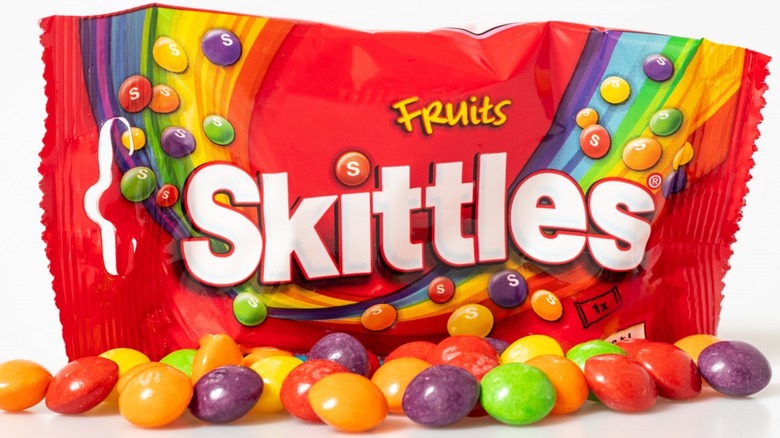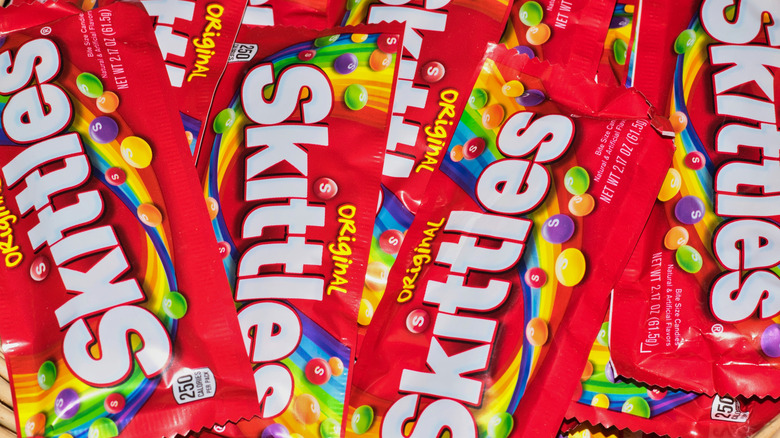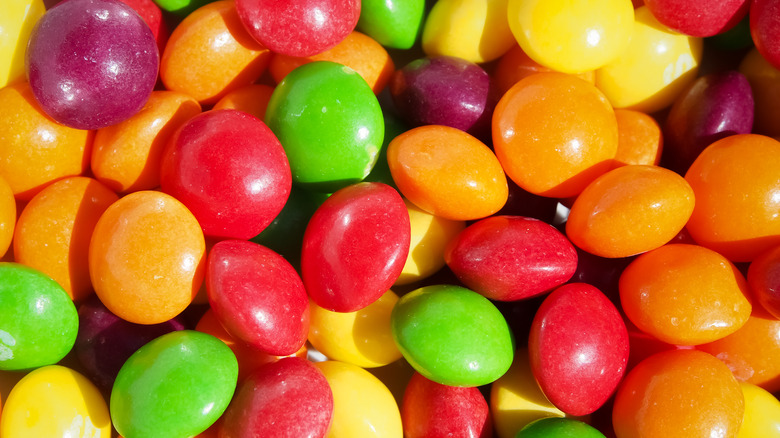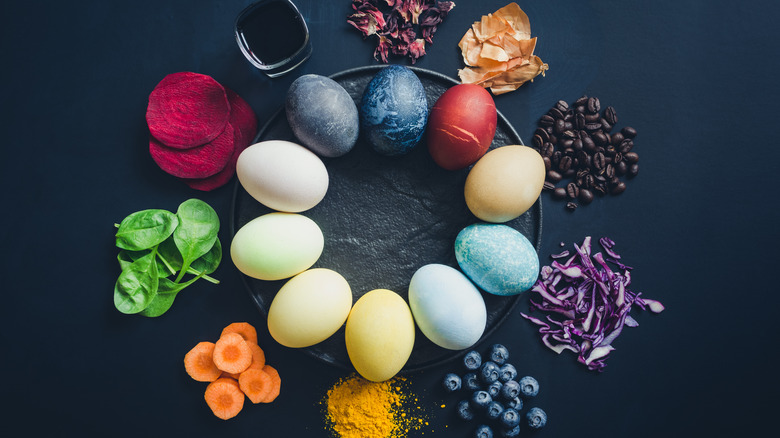The Surprising Reason Skittles Are Banned In Other Countries
It turns out that when you "taste the rainbow" by eating Skittles, you might just be tasting something else you probably didn't bargain for, too. Titanium dioxide is an additive found in the popular candy, not to mention many other foods, like soups, sandwich spreads, and Starburst, says Everyday Health. Although it's still ever-present in the United States, some other countries are far more skeptical of the ingredient, thanks to reports that the additive damages DNA over time. This can possibly give those who consume it a higher risk of cancer.
In fact, the European Union announced in 2021 that titanium dioxide is not considered safe in food, even though dangerous effects have yet to be proven. Still, experts haven't been able to prove that it's entirely unsafe, either. Per Everyday Health, it's likely that Skittles (and other foodstuffs containing the additive) will eventually be banned. Sweden and Norway have already banned the confection, says Eat This, Not That, but those two countries are ahead of the pack for an entirely different reason.
The real reason Sweden and Norway banned Skittles
Despite the E.U.'s concerns, Skittles aren't banned in Sweden and Norway because of the titanium dioxide additive inside the candy. In fact, the countries are more concerned about allergic reactions and hyperactivity in children caused by the product's food coloring dyes, yellow 5 and yellow 6, per Eat This, Not That.
Elsewhere in the E.U., if you get your hands on a packet of Skittles, they will probably taste a little different because they are colored naturally using spices, veggies, and fruits. Though the E.U. hasn't banned yellow 5 and yellow 6 dyes, it requires that any food containing the colorings must be packaged with a warning that reads: "may have an adverse effect on activity and attention in children," according to The New York Times.
Meanwhile, in the U.S., the Food & Drug Administration does note that yellow dye 5, which is used in a lot more products besides Skittles, sometimes causes reactions such as hives and itching. As a result, it must be noted on labels. So, the next time you break out in itchy bumps after eating a handful of Skittles, at least you'll know why.
American concerns about Skittles' ingredients are growing
While yellow 5 and 6 dyes are not banned in the U.S., support in favor of banning them has been building. In 2015, for example, Kraft removed the food colorants from its famously glowing-orange mac and cheese powder, noted CBS. The move was not necessarily because of the E.U.'s ban on the dyes; Kraft had already removed yellow 5 and 6 from its European products, and it chose to do the same Stateside because customers were "looking for simpler, more natural ingredients."
Skittles became part of the conversation about controversial food additives in May of 2021, when the Environmental Working Group urged the government to ban titanium dioxide. A press release issued by the group explained that the European Food Safety Authority found evidence that the titanium dioxide used to color Skittles, Starbursts, and other "ultraprocessed foods" is toxic. "Too often, the FDA allows the food and chemical industry to determine which ingredients are safe for consumption," EWG nutritionist and registered dietitian Aurora Meadows said. According to Healthline, titanium dioxide is a pigment used to make the colors of candies and even non-edible products more intense. Skittles have yet to be banned in the U.S., but the pressure to at least change their ingredients is certainly there.
Will there one day be a naturally colored Skittles rainbow in the U.S.?
The likelihood of candies being completely removed from the market is low, even in the E.U. How, then, are Skittles bringing the rainbow to countries that ban commonly used artificial colorings? With nature, of course. European Skittles are hued with vegetables, fruits, and spices, as Eat This, Not That reports, and Food52 lists several other plants from which we can derive natural food colorings. Yellow, for example, can easily be made with saffron or turmeric, highly staining spices that should be familiar to most home cooks. Other sources include beets, squid ink, and matcha. Of course, the resulting candy might taste different, but it would at least be safer for consumption.
For some consumers, natural colorings still might not make Skittles worth eating. When Mars, the owner of Skittles, announced in 2016 that it will work toward transitioning to natural dyes (by 2021, actually), Grub Street called the company's move "misguided." The writer's point wasn't that we should continue to eat these chemicals. The point was that if you look at the ingredients list for Skittles, none of it is natural. The entire candy would have to change to be considered unprocessed.



